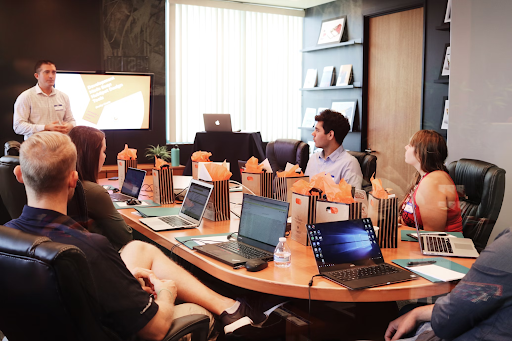
Is assessment a top priority for learning and development?
It seems like an obvious point to make, but why bother putting your employees through training if they don’t learn anything or develop new skills? This is something a staggering amount of businesses forget, as their priorities lie elsewhere.
Seeing as a great deal of time, effort, and resources go into most training programs, the vast majority of businesses will want to make sure that the learning materials cover essential topics relating to the job in question. This is fair enough, but you can’t assume employees will automatically learn and remember what is placed in front of them.
For this to happen, you need to continually examine and assess each member of staff to discover whether training has had a positive impact on their learning and development. Thankfully, an increasing number of businesses are starting to recognise this fact and are allocating their training budgets accordingly.
Investing in training
Following on from the financial crisis, global economies have been progressively improving, which is good news for corporate training. Not only are businesses investing in learning strategies, technologies, and content, they also expect this trend to continue. Furthermore, assessment tools, learning management systems, and mobile technologies are also being given greater precedence than before.
This is based on responses from members of the Chief Learning Officer Business Intelligence Board and their annual investment choices, which provides insight into the industry’s most popular technologies and service areas as well as what spending will change between 2015 and 2016.
After a period of decline, Chief Learning Officers (CLOs) reported that budgets have increased for the third year in a row, with 60% revealing their investments in training are higher than 2014. The rate of these rises is quite staggering too, as CLOs say their budgets have increased by almost 20%.
The forecast for next year looks rosy as well, with more than 60% of CLOs expecting their budgets to increase. So, does this investment positivity mean that more money will be given to training assessments rather than the learning materials themselves?
Training spend priorities
Despite bigger budgets, CLOs remain careful and considerate when it comes to spending and are driven by areas that can provide visible results. For example, more than half of all CLOs expect spending to increase for technology, strategy, and content libraries.
This is not a surprise though, as the previous two years have witnessed a similar pattern, promoting strong links between learning and business targets in order to increase the influence of spending and delivery.
However, in terms of the technologies receiving investment, CLOs are focusing on assessment tools and learning management systems. While these technologies cover a broad range of capabilities, organisations are seeking out ways to better evaluate training and promote high performance.
As opposed to a simple test or examination after training has finished, which doesn’t help with employee engagement and retention levels, CLOs are beginning to realise that performance support technologies provide a better insight into the effectiveness of learning as it takes place. For instance, on-the-job assistance is now being recognised as an inexpensive way to increase capability in a workforce with expanding responsibilities.
Along with assessment tools and learning management systems, content libraries are also a growing concern, with a focus on leadership development. This is because retiring leaders will soon be replaced by the next generation of executives. Providing these mid- and senior-level staff with access to content libraries as well as mentoring and job rotations has been proven to boost retention rates and can help businesses ensure talent is available when needed.
The growing significance of content and technology
From their responses, it is clear that CLOs believe blended content, e-learning, executive development and perhaps above all else, assessment technologies are the future of corporate training. Furthermore, instructor-led training continues to decline as well.
CLOs now acknowledge that from a learner’s perspective, informal training techniques are much more appealing and effective. Combined with the fact that e-learning is generally much cheaper to implement than traditional training and investment in this area will surely rise even more. Content libraries are shifting away from specific skills for specific roles and more towards areas that help run the organisation too.
All of this is a possibility thanks to technology, which continues to be the major source of efficiency gains throughout the enterprise. But how do CLOs know that their investments are delivering such rich rewards? Because of assessment and evaluations tools, which is now top priority. By combining learning management with assessment and evaluation technologies, CLOs have a powerful tool that helps to deliver hugely beneficial training programs.
While technology spending will continue to support organisational requirements, the macro trend toward increased assessment and learning analysis suggest a greater focus on making sure learning content is targeted and relevant to the individual. Or in other words, guaranteeing that training achieves its intended objectives, which businesses often lose touch of.
The future of training
In years gone by, CLOs could only dream of implementing highly advanced training technology. But now, it is a distinct possibility and something that deserves to be given the lead, as technology can deliver immeasurable benefits in terms of learning and assessment.
As a result, CLOs are hungry for more technologies that can improve the learning and assessment experience, such as Spaced Repetition. With strong scientific validity and tools to increase the effect of training on knowledge and performance, it seems like only a matter of time before this tops the priority list too.
But for the time being at least, CLOs remain focused on measuring and managing high-quality learning experiences in order to successfully deliver enterprise objectives and values. With higher budgets and more investment opportunities, CLOs are able to give assessment tools and learning management systems the attention they deserve.


